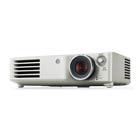alaTest Sites
About alaTest
Connect with alaTest
alaTest, All about reviews. © 2005-2025 ICSS AB. All rights reserved. Privacy & Terms
![]() Buying Guide
Buying Guide

Strictly speaking, not everyone owns or even needs a projector but if you are a movie enthusiast or work in the education or business sector, you would know just how valuable a projector can be. A projector enhances the whole experience of home theatre entertainment like no other gadget can. On the other hand, they have great utility value in commercial offices and educational institutes. Considering that projectors aren't exactly the most popular of electronic devices, very little is known about their specifications and details. What are the features that you must look for while purchasing a projector?
Before we even begin answering that question, there are a few questions you must answer for yourself. What purpose are you going to use the projector for- home theatre entertainment or business ventures? How often and how much will you use the projector? Will you need to carry it from one place to another often? And finally, what is the budget you are working with it?
Once you have a clear picture in your mind, go through the following technicalities.
There are primarily two types of projectors which use very different technologies. Digital Light Processing or a DLP projector uses microscopic mirrors, each of which represents one pixel of a projected image. DLP projectors usually produce deep black and nicely saturated colours. The video looks complete and smooth, the pixels are not fragmented onto the screen and it makes for great movie viewing. Additionally, DLP projectors can run for hours with consistent image quality. So, if you plan to use the projector extensively, it would be a better option to invest in a DLP projector. On the flip side though, DLP projectors continue to have the rainbow effect due to which instant flashes of red, blue and green can be seen on the screen sometimes.
The other type known as the Liquid Crystal Display or an LCD projector has embedded crystals which light up as electric charge flows through them. These projectors are known to produce brighter and sharper images and the emphasis is on detail. However, they function best when used for a few hours a day beyond which the quality begins to deteriorate.
Quite obviously, image resolution is an important factor to consider while buying a projector. It is actually pretty simple, the higher the resolution, the better. A high resolution translates to a detailed picture. The range starts from VGA 640x 480 which is the most basic resolution and goes up to UXGA 1600x1200 which is the highest level of image resolution available and the quality of the image is comparable or even better than a Blu-ray player. In the middle ranges, 1200x800 works well for home theatre but if you are looking for high definition video output you can opt for 1280x 1024 as well.
This depends quite directly on how you plan to use your projector. If you will primarily use it for viewing movies, you should need a 16:9 ratio but if you intend to watch TV on the projector, 4:3 is usually the standard. For gaming enthusiasts, a 16:9 works out perfectly fine.
In the case of projectors, their size and weight becomes a crucial factor. Typically, a DLP projector can be pretty heavy and can take up a lot of space. So, if you plan to move the projector around regularly, you might want to consider an LCD projector. If you are planning to attach the projector to the ceiling, weight is an again an important factor to consider. So, decide all these logistics details and then look for an ideal projector accordingly.
The brightness of any projector is the amount of light it produces and it is measured in lumens. If you are buying a projector for an office or an educational institute where it will be used with the lights on, you must look for a higher lumen count somewhere in the range of 2000 to 3000. On the other hand, for home theatre entertainment, a projector with a lumen count of 1000 to 2000 should work just fine.
There are other factors that you might want to look into like contrast ratio, the kind of lamps used and the amount of maintenance and upkeep that you will require for your projector. Once you have decided on your priorities, list down a few models that appeal to you and consider their pros and cons. You have a variety of brands to choose from like Sony, Epson, BenQ etc.
Xgimi Aura 2 Projectors
JVC DLA-NZ800 Projectors
Hisense PX3-Pro Projectors
Epson QB1000 Projectors
JVC DLA-NZ900 Projectors
BenQ X3100R Projectors
alaTest, All about reviews. © 2005-2025 ICSS AB. All rights reserved. Privacy & Terms

 Drive sales with reviews on your site
Learn more about our B2B solutions
Drive sales with reviews on your site
Learn more about our B2B solutions